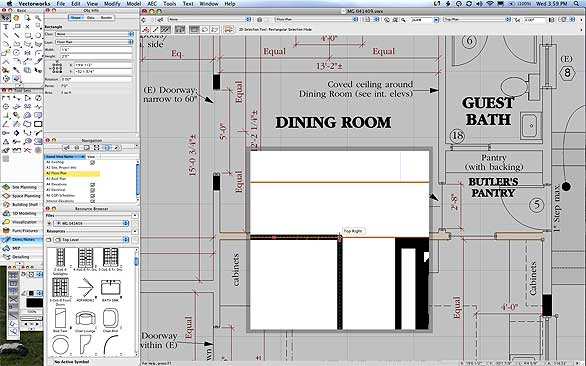

- #Vectorworks viewer 2019 measuring tape hide drivers
- #Vectorworks viewer 2019 measuring tape hide mac
When the tape measure tool is used in isometric, it is actually easier to get the snap points you expect, but I have seen that the user will more often enter an elevation view to get these measurements. This happened/happens when drawing in those views with things like 3d polygons and NURBS as well, it snaps way off in the distance while looking totally right until checked in an isometric view.
#Vectorworks viewer 2019 measuring tape hide drivers
In front/left/right/back a user would almost (as far as I have ever seen) want to measure from any point in the foreground to any point further "back" from the screen. Vectorworks Artlantis SketchUp form·Z Software Updates Dongle Drivers Plugins Vectorworks Artlantis form·Z Free Application Viewer Vectorworks SketchUp order or info 020 8940 4333 email. Each tool set may contain different tools in different workspaces.I think the problem is with snapping as well, in Top/Plan the snapping is able to refer to the object stacking order to determine priority for snapping to certain points. All workspaces: Dims/Notes tool set Spotlight and Landmark workspaces: Basic tool palette Click to start the first measurement. The tape measure tool should be able to do this, but sadly it cannot. To measure a distance: Click the Tape Measure tool from the appropriate tool set/palette. So I just arrived back to my office after holidays, and I start working like I usually do and come to a point where I need to measure the vertical distance between to point, which is normally nothing difficult. Note the measurements before the display clears. The Basic palette contains different tools in different workspaces.ĭepending on the workspace, this palette includes the following tool sets, whose tools are grouped by similar functionality the palette and its tool sets can be customized through the Workspace Editor. Measurements display in the Data bar until the mouse is double-clicked. The Basic palette and Tool Sets palette have special functionality, as described in Tool Palette FeaturesĬontains a single set of basic object creation and editing tools the palette can be customized through the Workspace Editor. Provides access to classes, design layers, sheet layers, viewports, and saved views, while the drawing area remains accessible see The Navigation PaletteĪccesses all lights and cameras in the file see Managing Lights and Cameras with the Visualization PaletteĬontains palettes with script resources see Creating and Editing Script Palettes and Scripts Measurements display in the Data bar until the mouse is double-clicked.

Lists context-sensitive object information for viewing and editing see The Object Info PaletteĬontains controls for adding and modifying working planes see The Working Planes PaletteĪccesses and manages the resources available for use in drawings, such as hatches, record formats, worksheets, scripts, symbols, textures, and more. To reset to the original workspace settings, click Reset Saved Settings from the Vectorworks Preferences: Session Tab.Ĭontains SmartCursor snapping controls that can be toggled on or off see Setting Snapping ParametersĬontains a selection of colors, fills, pens, and other object attributes see The Attributes Palette The settings in this user file override the initial palette settings in the workspace file. Also, there is no way to Save any of the changes made in the Viewport. However, you will not be able to directly edit plug-in objects (doors, windows, etc).

Palettes can be docked to the application window (see Docking Palettes ).Įach time you exit the Vectorworks program, the current palette settings and positions are automatically saved for each workspace in a file in your user folder (\Settings\SavedSettings.xml). Vectorworks, Inc Employee Posted JAHDesign1 Hi Matt, The Viewer does have the ability to select, move, and delete objects.
#Vectorworks viewer 2019 measuring tape hide mac
Most palettes can be resized by the standard Windows or Mac resize method.Click the title bar of any displayed palette and drag it to the desired location.Alternatively, right-click on the drawing area, and select Palettes > from the document context menu. Select Window > Palettes > to display or hide palettes.You can customize which palettes display and where they are placed for each workspace. Depending on the initial settings, some palettes may be hidden when the program is launched. The workspace contains various palettes for creating and editing objects.


 0 kommentar(er)
0 kommentar(er)
